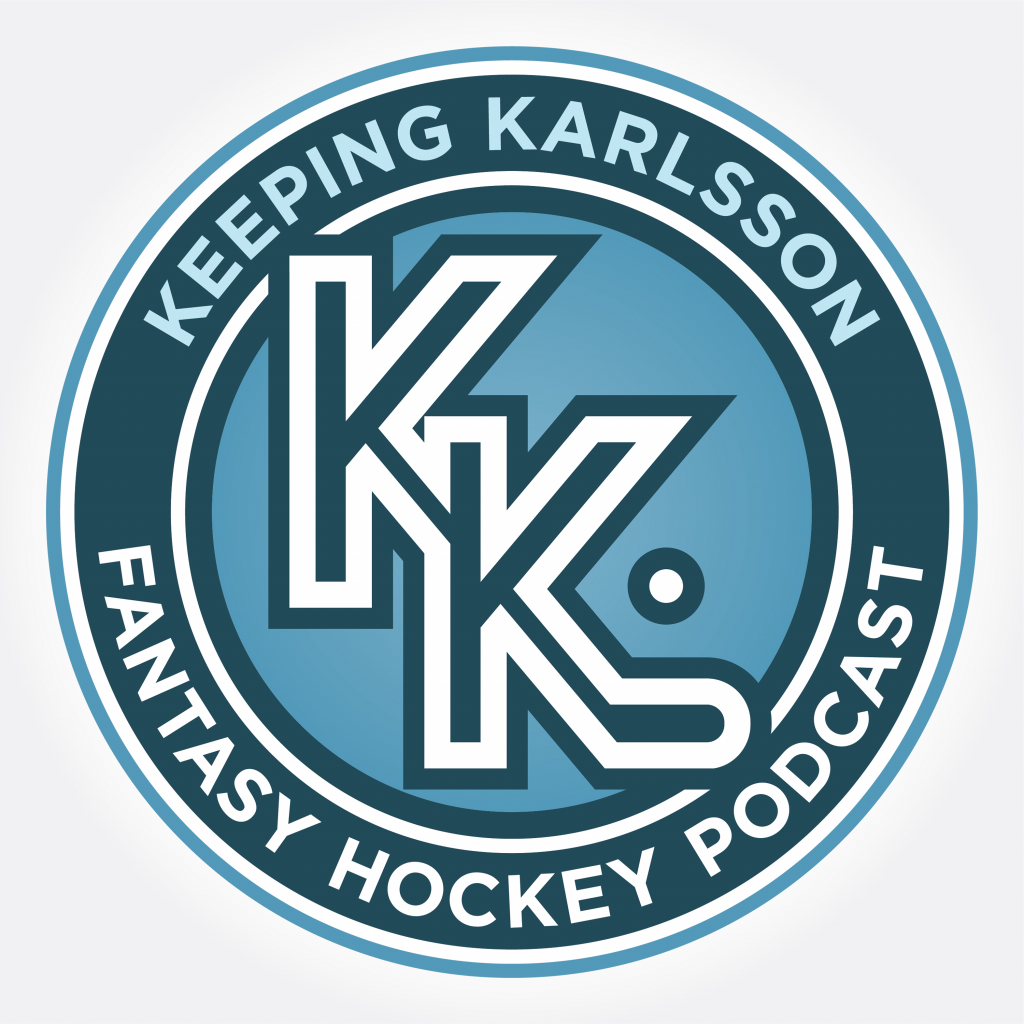On the opening track of Kendrick Lamar's latest No. 1 album, "GNX", the 22-time Grammy award winner and tonight's Super Bowl halftime show headliner encourages listeners to get "geeked up." Well, Kendrick, you have your wish. Welcome to the latest edition of Geek of the Week! I'm your host, Eli Feldman.
Although 46 days have passed since the most recent Christmas (but who's counting?), another season of giving (and taking) is upon us: the 2024-2025 NHL trade deadline on March 7, 2025. Much like Christmas day, the trade deadline is an incredibly exciting time for fantasy hockey managers. The swell of deals leading up to the 3 p.m. ET deadline causes managers young and old to spring out of bed, hearts racing, in the wee hours of the morning (I sincerely hope that's not just me, but I digress…).
When it comes to fantasy hockey, we can all agree that deployment is enjoyment. As they say, a fish looks uncouth perched in a tree. So before pulling the trigger on a waiver wire pickup, it's critical to evaluate a player's deployment, including their average TOI and spot in the lineup (both at even strength and on the powerplay). Consider the following two prospective waiver wire pickups:
- Free Agent forward X is shooting up Dobber's Hot Players list, but is playing < 15 minutes per night in a bottom-six role and with limited power-play opportunities; and
- Free Agent forward Y is not necessarily performing remarkably offensively, but they are entrenched on L1 and PP1.
I don't know about you, but I'm taking option two with the hope they turn into the next Gabriel Vilardi.
Given the importance of deployment, I've decided to launch a three-part series focusing on trade candidates who, if dealt in real life, could help your fantasy hockey teams during the stretch run (provided they benefit from favourable deployment in their new digs). Part I of the series focuses on G, A, and +/-; Part II will focus on PPP, PIM, and SOG; and Part III will analyze HIT, BLK, and W/GAA/SV% (I went with roman numerals in the spirit of Super Bowl LIX Sunday).
Without further ado, let's dive right in!
Goals: Brock Nelson & Rickard Rakell
Exactly one month before the NHL trade deadline, TSN updated its annual Trade Bait Board, ranking the players most likely to be traded on or before the trade deadline. As of this past Friday, the first and second names on the list were none other than Brock Nelson and Rickard Rakell, respectively.
Beginning with Nelson, the current New York Islanders centre is a proven NHL goal scorer, having netted 20+ goals eight times in his 12-year NHL career, and pacing for 25 goals this season. Although 25 goals would mark Nelson's lowest goal total since the COVID-abbreviated 2020-2021 campaign, his goal scoring prowess, coupled with his pending UFA status, make him a viable acquisition on deadline day.
From a deployment perspective, it's highly conceivable for Nelson to benefit from a change of scenery. Despite recently acquiring offensive defensemen Tony DeAngelo and Adam Boqvist, the Islanders' power play has been abysmal this season, clicking at just 11.54% (dead last in the League). The situation is not much better for Nelson at even strength, having spent most of the year playing on a mediocre line (based on xGoals %) with Kyle Palmieri and rookie Maxim Tsyplakov.
If Nelson is indeed on the move by the deadline, the mix of new linemates and a spot on a relatively productive power play could be just what the doctor ordered for Brock, as he vies to crack the 30-goal mark for the fourth straight season.
Just one spot down TSN's Trade Bait board is Rickard Rakell, whose situation is somewhat comparable to that of Brock Nelson. Like Nelson, Rakell is a proven sniper, having lit the lamp at least 15 times in nine of his 11 full NHL campaigns. However, whereas Nelson is pacing for his lowest goal total in four seasons, Rakell is currently pacing to set a new career high in goals with 36. Perhaps playing alongside Sidney Crosby has its perks!
Although it's difficult to envision Rakell in a better situation from a deployment perspective, developing chemistry with new linemates on a contending team while playing meaningful games could be the recipe for Rakell's continued goalscoring success.
Assists: Ryan Strome
When siblings both reach the pinnacle of sport, they are inextricably linked to one another. Sometimes, it's the older sibling who enjoys greater success (Scott Niedermayer, for example); but often, the younger sibling is remembered as the greater athlete.
Ryan and Dylan Strome may be no exception. Whereas Dylan Strome has surpassed the 50-point threshold in four of seven seasons as a full-time NHLer, his older brother Ryan has reached the mark just three times in his career, despite playing for four more seasons. Although R. Strome nearly reached the 60-point plateau five years ago as a member of the New York Rangers, his tenure in Anaheim has been largely forgettable, totalling a measly 41 points during each of his first two seasons with the team.
This year has been marginally more productive for R. Strome, who is currently pacing for 46 points while filling a top-six role and occupying a spot on Anaheim's top power-play unit. Notably, 16 of the 23 assists R. Strome has accumulated thus far have been primary assists, an indicator of R. Strome's playmaking success. At 31 years old, R. Strome likely has plenty of gas in the tank, and his $5M cap hit for the next two seasons could make him an attractive bargain for a contending team.
Fittingly, by leaving the sunny state of California for breezier climates, it would be unsurprising to see R. Strome producing more apples moving forward.
Plus-Minus: Carson Soucy
Unlike other categories, plus-minus is largely driven by team success. Although there are exceptions, as a general rule, players on playoff teams boast higher plus-minus ratings than those on non-playoff teams.
Take Carson Soucy for example. During Soucy's first five seasons as a full-time NHLer, his team made the playoffs four times. Although Soucy was a plus player each year, unsurprisingly, his lowest total (+7) came as an inaugural member of the Seattle Kraken, a year in which his team missed the playoffs.
Amidst a turbulent season in Vancouver, Soucy's plus-minus rating has dipped into the minuses for the first time (minus-15). While the NHL's 4 Nations break represents a prime opportunity for Soucy to reset, perhaps a more permanent reset is on Soucy's horizon – by way of trade.
Speaking of general rules, here's another one: most players on the move on deadline day go from weaker to stronger teams. Each year, teams load up for the stretch run, acquiring that one "missing piece" to put their team over the top. It stands to reason that if Soucy is indeed dealt by deadline day, the frigid British Columbian climate may not be the only "minus" he leaves behind.
***
That's all for this week! Stay tuned for Part II of this series next Sunday evening. Until then, have a great week and Happy Super Bowl Sunday to those who celebrate!
2 Comments
Leave A Comment
You must be logged in to post a comment.





 FLA
FLA CHI
CHI NYR
NYR PIT
PIT L.A
L.A COL
COL CAR
CAR UTA
UTA SEA
SEA
 NYI
NYI TOR
TOR N.J
N.J PHI
PHI

Frigid BC climate? In Vancouver? Where do you live, Eli?
It felt frigid this morning in BC, for what that’s worth.